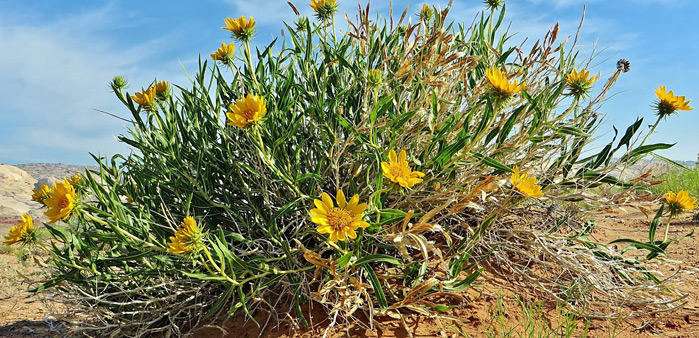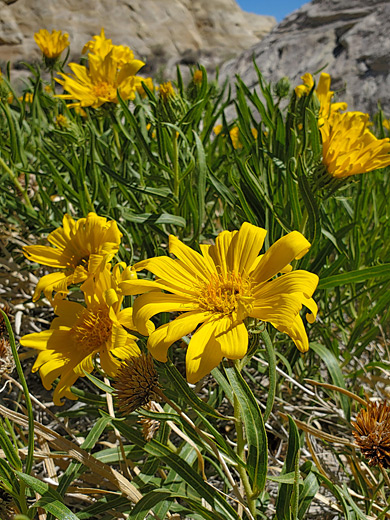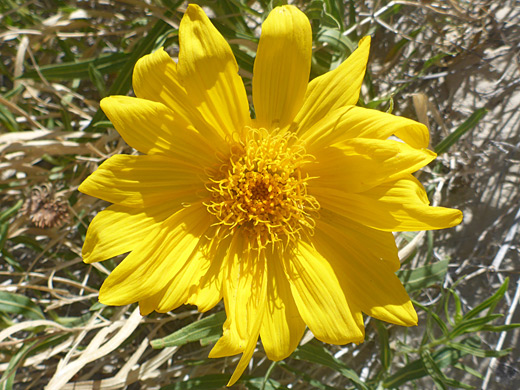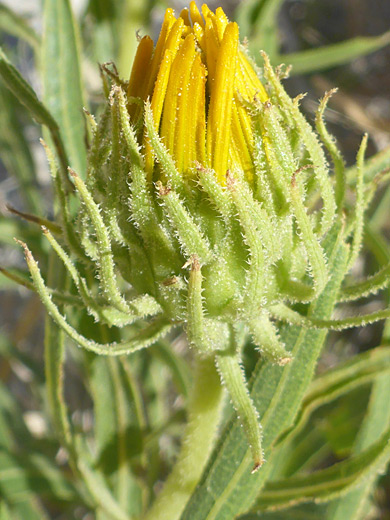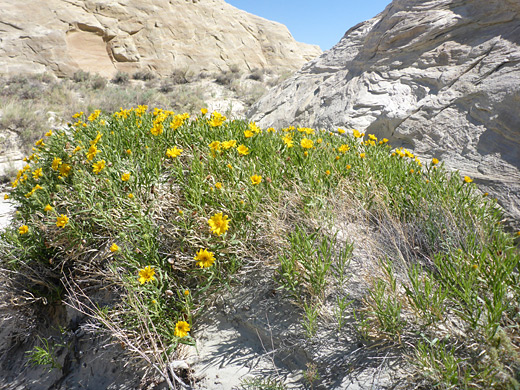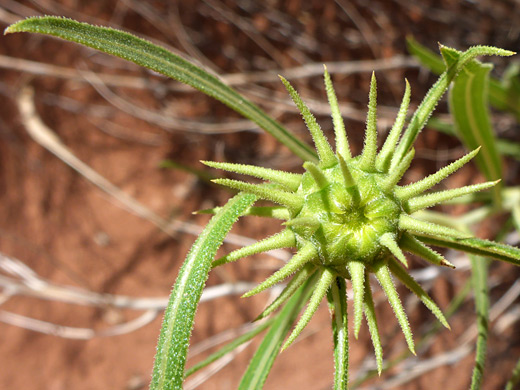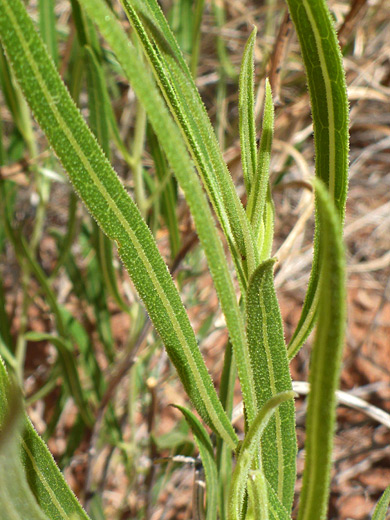Common name:
Badlands mule-ears
Family:
Scientific name:
Scabrethia scabra
Synonym:
Wyethia scabra
Main flower color:
Range:
South Montana, southwards to Arizona and New Mexico
Height:
Up to 3 feet
Habitat:
Sandy locations in semi-deserts and pinyon-juniper woodland; 3,400 to 6,000 feet or higher
Leaves:
Alternate, linear, up to 8 inches long and less than an inch wide
Season:
April to August
Scabrethia scabra (the only species in this genus) is a large flowered plant of the high desert, forming clumps several feet tall and wide; a mix of fresh growth and the dead stems and leaves from previous years. The species name scabra refers to the rough, scaly, sandpaper-like texture of the leaves and stems. Leaves are long and thin, with a prominent, light-colored midvein (the same color as the stems), and fine teeth along the edges.
Flowerheads are borne singly at the top of the branched stems. Phyllaries are narrow, quite well-separated, up to an inch long, often projecting outwards from the involucre at 90 degrees, or curved back downwards. The 10 to 23 broad, ridged ray florets are up to 2 inches long.
There are three subspecies; ssp attenuata, ssp canescens and ssp scabra, differing in the shape and hairiness of the outer phyllaries.
Flowerheads are borne singly at the top of the branched stems. Phyllaries are narrow, quite well-separated, up to an inch long, often projecting outwards from the involucre at 90 degrees, or curved back downwards. The 10 to 23 broad, ridged ray florets are up to 2 inches long.
There are three subspecies; ssp attenuata, ssp canescens and ssp scabra, differing in the shape and hairiness of the outer phyllaries.
All Contents © Copyright The American Southwest | Comments and Questions | Contribute | Site Map



